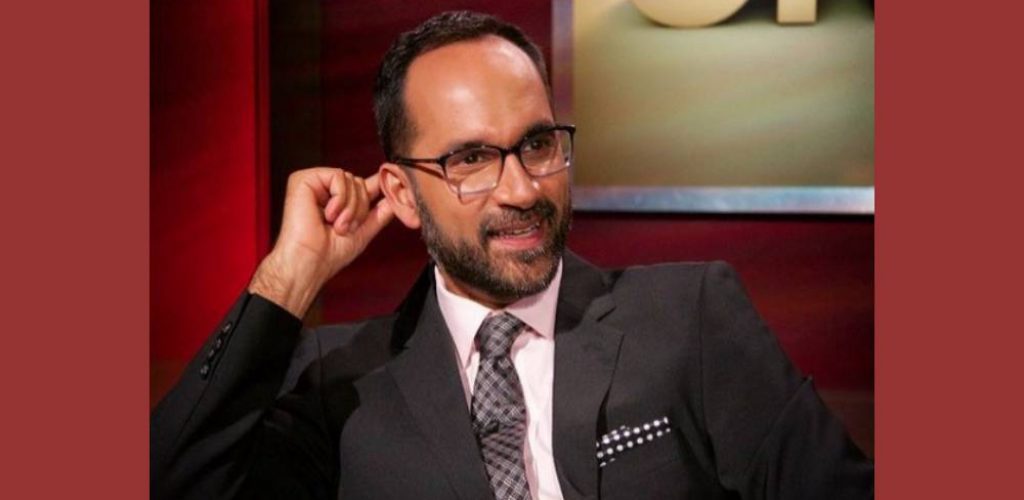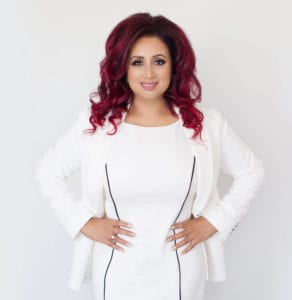Raj Girn: Hi, guys, thanks for tuning into another great episode of the `Transform Your Confidence Show.` Are you wary about the hypersensitive social culture that we live in today where any type of political incorrectness can have grave effects on your brand? Then you know that one of the most important parts of what you do is how you dial your content strategy in to support strong brand image and loyalty. In this week’s theme of branding and marketing, Part 2 of my two-part series is entitled `The Power of Content Strategy to Brand and Market Your Business for Success.` My guest is one of Canada’s preeminent thought leaders in content strategy, Mohit Rajhans.
Here is Part Two of our conversations:
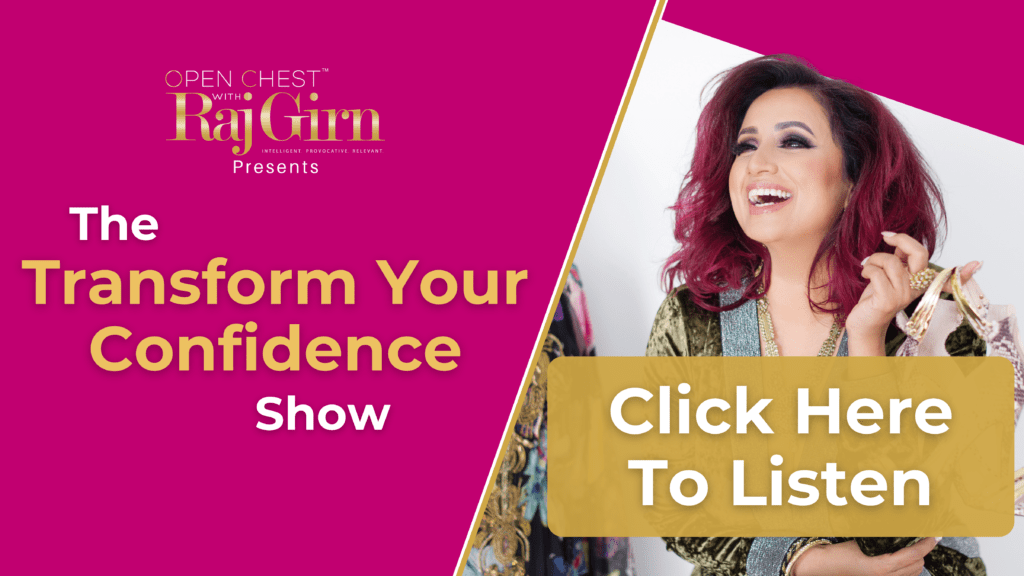
Raj Girn: Can you share an example of where any brand used marketing content really well to convert audiences or to kind of hold their attention?
Mohit Rajhans: Yeah, I was really impressed with Joanna Griffiths’ campaign with Knixwear. Knixwear is a Canadian company and I followed her. She used to be in PR and a very interesting story about how she realized that so many people who wore female undergarments weren’t able to to find the same comfort level based on certain situations. I’m paraphrasing. I’m wondering if she hears that she’s going to be like, that’s not the story. Like, you’re not my communications guy. But no, I was because, the paid and the editorial was complimentary. She told her story about funding the company. She’s a young mother as well, and her entrepreneurial, mompreneurial thing became a part of the story. And then she’s on busses and billboards in New York City as a result of seeing the demand grow. And I really thought that she went at this with less. This is lingerie. This is this this is comfort. This is all people whatever. She is very clear and concise. This is for this, it’s a premium brand. It’s expensive. It’s not it’s not something you pick up at Costco necessarily. Yet.
So do you think that had a lot to do with her content marketing strategy being on point, being clear and simple and highly targeted?
And timely. So now you’re talking about products that are furthering the conversation about things like why is there this discrepancy? Why don’t we care about this stuff? Why is the innovation happening here or not here? And we’re starting to see that more and more as we see industry starting to get deconstructed. That’s the other thing that we should sort of refer to, is that no longer are you making content in a vacuum, just to hope that people are going to be able to connect with it. There’s feasible ways for you to carve out your voice, create an audience for yourself, get patronage and sell directly to them without even leaving the confines of what you’re comfortable with. And if you realize that your digital footprint matters and that you have the ability to utilize these tools in a way, then it’s really up to you about what you want to invest in. It’s not really up to anybody else. You know, you’re going to hear a lot of no’s from people, but that doesn’t mean you can’t go back to your your workstation, whatever it is, and continue to work at what it is that you want to see in fruition. Right. And that’s the beauty about digital.
“You’re going to hear a lot of no’s from people, but that doesn’t mean you can’t go back to your workstation, whatever it is, and continue to work at what it is that you want to see in fruition.” ~Mohit Rajhans
I think that’s the thing. I think you really kind of hit on a key thing that I really want everyone to take away with them and that is, the thing about branding is be clear on what your story is if you’re a founder. And how is that story connected to the product? And how does all of that fit into what people are looking for today? You know, what their value system is. And that’s the other thing. There are so many different value systems based on age, gender, socioeconomic upbringing and so many other things that have always been there, but have never been recognized until social media and the digital footprint came into play where all of a sudden everyone is able to stand up on their own soapbox and say, this is who I am and this is what I believe in.
And all of a sudden, people like them start to find them and people get their own ecosystems, they get their own tribes. And the whole world may not know who they are, but they have a huge following on a specific platform. Now, this is something also extremely new to the way that marketing is done and the way that we reach out to the consumer. And again, I’m going to make the point again, why branding in business success is absolutely crucial today. And for anyone out there who doesn’t understand what branding is, branding is how you connect your story and your product to the consumer that you feel is the consumer that would want this. How do you create that story? And the story’s created in layers — the colours you use, the languaging you use, the tone that use.
And it goes back to the messaging idea that we were talking about, right?
Absolutely right. So so with that said, who would you say that you’ve seen does the marketing content piece really badly? Or you’ve seen has done it badly and there’s been consequences because of it. And we’re talking about advertising is where I’m focusing on this.
Because I don’t want to get sued, I’m not going to call it one specific company. But I will tell you one thing that I find completely odd is that there are companies that spend so much money on digital advertising, but they don’t know where their pre roles and their their advertising is going. And I find that really odd that you would spend as much time… I mean, if Wix realized, or a company realized, just how annoying their ads are starting to be, that’s counterintuitive to me wanting and caring about the product. So I think what we’re going to see in the near future is definitely a microtargeting of ads so that you have more control of how your branding is being used. It’s tough, right? Remember, you’re talking about four different companies, including Amazon and Google, that are now struggling to show people that privacy and filtering and all of those things are at the center of the user experience.
“I think what we’re going to see in the near future is definitely a microtargeting of ads so that you have more control of how your branding is being used.” ~Mohit Rajhans
Well, that takes away from the advertising experience. So I don’t want to necessarily say that I’ve seen a lot of marketing fumbles, what I do think is that from an ad and ad tech and ad buying standpoint, I don’t think everybody is 100 per cent sure where their stuff is going yet. And that’s that’s got to be fixed because there’s going to be some brand liability involved with association. Like imagine your ad runs before like a crime video right? They’re doing a lot to to to avoid that sort of stuff. But I think we’re also in a situation where it’s almost impossible. Like we’re not humans touching every single piece of YouTube video or every Facebook post that comes up. So the post moderated world is very dangerous for a marketing expert.
Because of all the algorithms or programmatic programmatic ads, you go somewhere and all of a sudden it follows you all over the Internet wherever you go.
Well, and then we have new privacy things coming up. Sorry, I should very, very quickly mention that Apple is about to introduce an update to their iOS, which will prevent Facebook pixels from being able to track you and your customer journey. There are other privacy issues.
Haven’t they already done that? Hasn’t that been rolled out just recently?
The the iOS 14 has been rolled out. The actual feature that prohibits certain social media tracking, etc., is a slow roll from what I’ve heard. Like, it’s not a switch. I think that’s to give people like my clients, Facebook ad, time to make adjustments. Because Facebook is going to take a hit from this. Their advertising revenue will automatically drop. They are there an automation king. So it’s clear, whether people have hit on something or not, there’s no hiding from it. So unfortunately, this is the reverse problem where all of a sudden they’re like, “oh, well, we’re not going to have access to all of these users anymore. So now we have to make sure that we show that value.”
The reason I got into that, I don’t remember. Oh, yeah. The privacy stuff. And then, of course, Google is doing the same thing where Google wants… Actually, it’s interesting with content, Google really wants to figure out a way for you to just live in their house between YouTube and Google shopping and their actual search thing and AdWords. They want you to create content within their sphere cell there as well, be found there and all of that stuff. And it’ll be interesting to see if they’re able to do that because companies like Shopify don’t want to play ball with them. They want them to be independent. So I don’t know if I answered your question, but I definitely wanted to make sure that I through those points there.
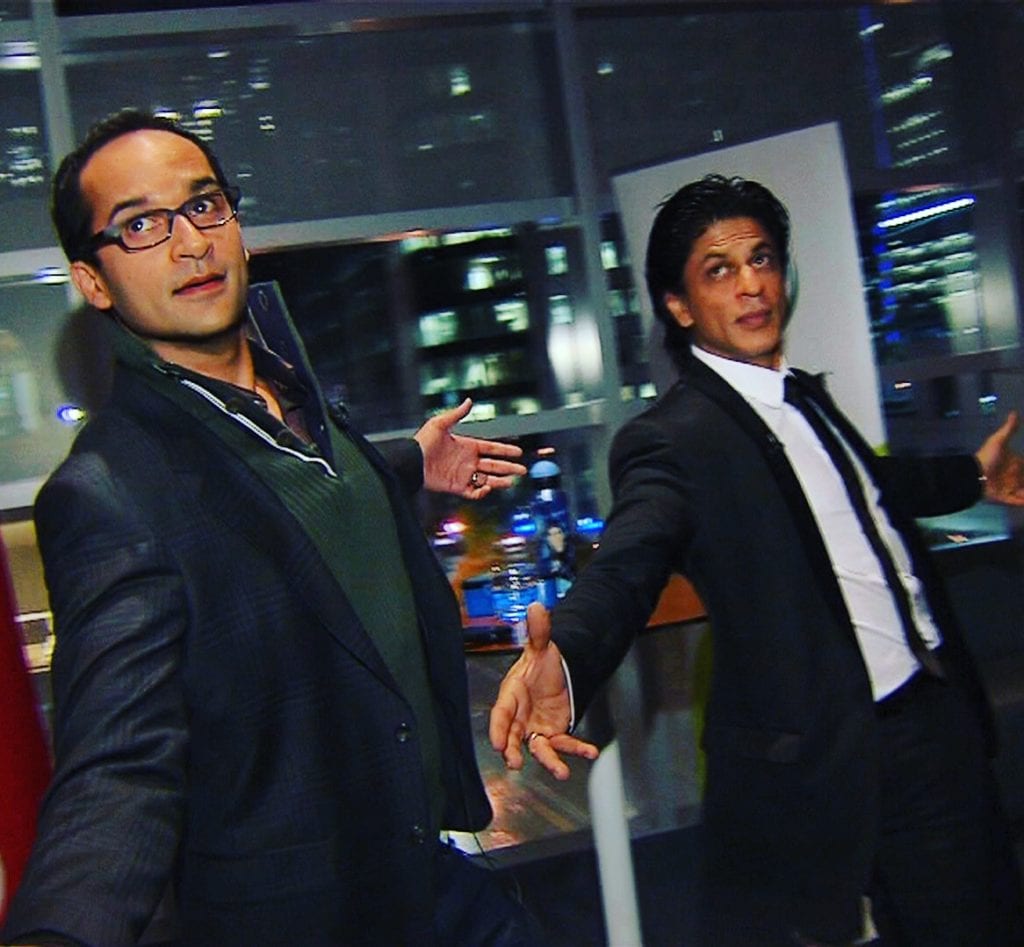
Well, I think that what you did is you kind of expanded on it and built up a number of really relevant points that people need to think about when they go to market, digitally speaking. So let me ask you this. What would you say are the top three ways you feel content strategy, be editorial- or marketing-centric, can be used by brands to connect with their ideal client? Just give me three that you think everybody should know about that’s going to market?
Yeah. One thing is focus less on content strategy and more on platform strategy. So it’s now time for you to stop thinking that one piece of good content works everywhere. Now you have to show the respect for the companies that are being built around you and understand you can get a lot of success out of drilling down on one thing or you get a lot of success out of using that same content in multiple ways. But don’t use the same content the same way everywhere you go. It doesn’t make sense. If they built something that was supposed to be pressed with one button and go everywhere, then they would by now. That technology exists and that technology and conversion would have been amazing because everyone would have been successful. That’s not what’s happening.
The second thing I’d like to mention, I’ve mentioned this before, is you’ve got to know where your audience is. If you are a yoga instructor and you have a three kilometer radius of people that you want as your client base, you don’t need to be advertising in Vancouver. Your content doesn’t need to be seen in Taiwan. So I think that we’re now at a place where we have to be very clear about where your audience really is and how that audience is function based on whatever your content strategy is. And three, and I’ve said this before, your growth only comes from being curious. You have to constantly find out what’s keeping people interested. I deal, right now, I’m beta testing on social audio spaces. And at first I was like “ugh” and then I got super into it because I realized, oh, this is thought leadership right now because nobody else is sharing thought leadership and podcasts are there and it’s wonderful, but it’s specific. Your audience will find it. And discovery is a little bit iffy right now in podcasting. So that’s why I’m in audio spaces right now looking for that inspiration.
“Your growth only comes from being curious. You have to constantly find out what’s keeping people interested” ~Mohit Rajhans
But I’ve done that every single time. Like I’ve done that when Facebook started. I’ve done that when Friendster started, when MySpace started. That curiosity will continue to fuel people like yourself and myself to constantly be innovative. And I think that’s the key here, is that nobody wants you to fail a content strategy. People want you to continue to innovate so that we do have a say. We’re not going to be able to put our hands up in five years and say, “Hey, what about us? Why didn’t we get to do this?” In five years they’re going to be like “You’ve had fifteen, twenty years of this no holds barred. You made the rules and you didn’t figure it out then?” You know what I mean? So I think that it’s very important for us to stop asking for so much permission and start taking. Hey, I’m a victim of it too. Oftentimes people say to me, not people, but, when I’m speaking to potential clients, they’re like, “So what is your sell here? What are you selling?” And I know the type of work I want to do. And unfortunately, with the type of work that I want to do isn’t in a direct sell. It is in a relationship, in a project that we work on together, in advice that I can give you, workshops that we can do together. So I think it’s important right now for people to also encourage that curiosity. And skilling up is a big part of that.
Absolutely. You know, a lot of great wisdom here. Clearly, you are a thought leader Mohit, because your trajectory is always thinking about what’s happening next. And I think that that’s the great value that you bring to a conversation like this is today’s already happened. Right? And I do believe that you can learn from yesterday. I do believe that if you’re thinking about doing something today, you already may be too late. I do agree with your idea behind that. So let me ask you this, then, for those who still don’t quite understand the connection between content, brand strategy, market conversion and sales. Can you break it down using a simple example for them? I mean, it’s not a simple question.
It’s not. And you know what? Here’s the worst part about what you’re saying is that you’re actually getting into something that we haven’t spoken about yet, which is a little bit of a misnomer. And that’s martech and marketing technology. I think that we’re not we’re not doing enough right now to speak about the fact that we think we’re smart and that creative is super and things are great. But a lot of this is automated around us. And so we are in a situation now where learning marketing technology is probably the best, the most beneficial way for you to be able to stop and say you can see that cycle happen from concept to commerce. And so the only thing I would recommend with reference to that is just understand that there’s a way of the world that’s happening, get familiar with it, and don’t assume that it’s going to be about whether something hit or didn’t hit.
Look, I’m on one email chain right now with a lady consultant, and I could tell she hasn’t written one of those emails herself she’s given me. You know, she’s not like you. She hasn’t put the thought into it. I know you labour over your stuff. You want to make sure it’s great. You don’t want to see one error in it. And she’s not like that. Whatever’s happening, I guarantee she doesn’t even know it’s happening the way it’s coming into my inbox. But that’s marketing. Email marketing is a huge, huge way to connect with people. And I think that we have to be a little bit less, what is the big and more again, know the audience. Your mom blogger audience is in your newsletters and therefore email addresses that two to three thousand a piece makes that audience for you. You don’t need to be the mom blogger on City TV at that point. You can be fine and fed in that situation. It’s funny because there’s a lady from Mississippi who I chat with on these chat groups as a consultant, and she would always say, “You look booked and blessed.” As a consultant you always want to have that aura or that you’re booked and you’re extremely humble about that.
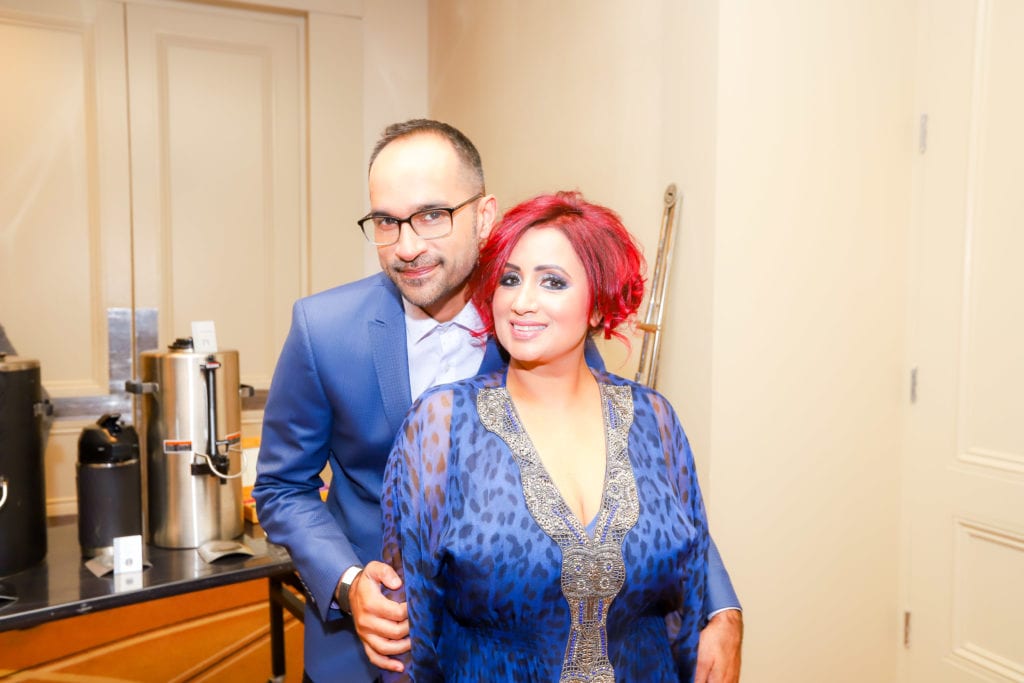
And I think one of the things that I’m extremely excited about, based on what you said, is that finally some of the stuff that I’ve been able to speak about for years are starting to make sense to people because the adoption has happened, that digital acceleration has happened. So I just hope we can end up having great conversations like this in the future, in the near future, where we’re moving that needle. Because we have to be the people that encouraged the leadership. There’s so many great people that are just a little bit afraid because of what’s happened in the past, just a little bit afraid to be a little bit bold. That imposter syndrome thing that “No, I did do something.” How many people do you and I know that have had a successful exit from a company or should be on a stage somewhere speaking or might have that story that they should tell, but they’re afraid to because they don’t know where they fit into the media mosaic? But those things are done.
There’s two things that you hit upon that I’d like to just quickly touch upon, Mohit. One is, you know, how you mentioned that you can tell when a person isn’t really in touch with the communications they’re putting out there. For example, the consultant that you received emails from that she probably didn’t even write her emails. And so I feel that it’s an important point to make is for anyone out there that is looking to kind of start their journey with the business. And they’re looking at the digital footprint, which you have no choice to do today. There’s always been this kind of thing that people have talked about, which I completely think is a myth and I don’t believe in it. And that is that you shouldn’t micromanage. I mean, this has been the whole thing that our generation, Mohit, has been taught that you shouldn’t micromanage because you put the right people in the right jobs. You know, we’ve all heard this in my generation.
You mean people? You shouldn’t micromanage people?
Your business should be micromanaged is what I believe in. I do believe, that you put the right people who are better than you in the right jobs. But if you don’t know what’s going on in every layer and every step of the process of your business and you’re the CEO or the founder or the person that owns the company, and you’re relying that somebody else actually always knows what you want to have happen. I feel that’s a big mistake and it’s a mistake that a lot of people make when they are going to market for the first time with the products.
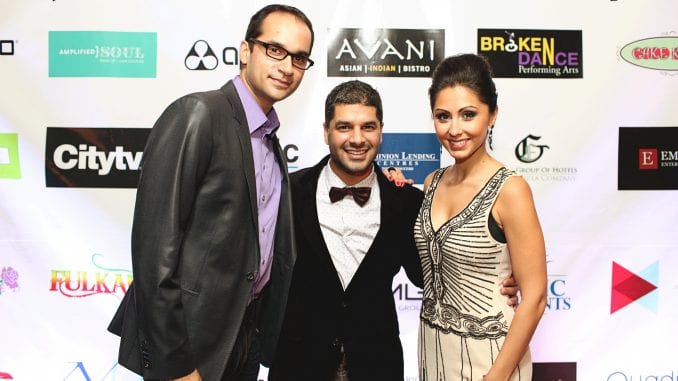
And this example of the consultant is one of those examples. She probably hired someone to put together her emails, just like you hire someone to do other parts of your business. And because you know this is what they do for a living, you think that they just are going to get it right. And they are probably brilliant at what they do, but they’re not brilliant knowing you know. They’re not brilliant at knowing how you function, how you speak, how you relate to people, how you communicate with people and what the value proposition is that you want from that exchange. So I do feel that there needs to be a lot more micromanaging happening across your company’s food chain to ensure that the consistency of what’s going on is in fact what you, sitting at the top, is wanting to happen.
Yeah, that’s interesting.
Yeah. So think about that. This is a whole other discussion that you and I can have. So, you know, you’re coming back on to have that discussion. But there’s a lot of myths out there that I feel really do need to be busted. And I feel that’s one of them. If you’re the one, if your neck is on the line. If it’s your money that’s being invested in this product or service or whatever it is that you’re doing and you’re the one that’s got the most to lose, why are you putting everything in the hands of someone else and hope that they can get it right just because I happen to be doing this for other people. They don’t know your audience as well as you do. They don’t know your value proposition as well as you do. And even though they may have the tactical skills they still need the massaging that comes from you because you’re the one that’s got everything to lose.
I think that one of the things that we have to be careful in reiterating with people is that there’s a difference between personal brand and branding. So if you got a product you’re bringing to market, you’ve got a supply chain that factors into everything that we’re talking about. But when you’re putting yourself out there and it’s your business and it’s multiple layers of your own business, you’re 100 per cent right in that approach. In fact, I think that one of the things the way the pendulum swings the other way now is that somebody like yourself benefits way more because of that personalization involved than somebody like the consultant we were referring to because they might think they’re personalizing, but they’re personalizing from three or four years ago in an automated newsletter format that doesn’t hit the right tone. So if we go back to original.
That used to work then because it was new and you felt like, oh, there’s touch points happening. But now we’re living in a world where that touch point isn’t good enough. It’s not enough.
It’s the messages is again. It’s the way that they are received, how you’re being able to connect. But, let’s also not forget the fact that in that personalization comes enormous opportunity to find new audiences. And so that’s one of the things that we can’t get too down about here, is that what we can talk about semantics and how people approach one thing or the other. The beauty about all of this is that there’s nothing but audiences to be found. I’ve connected with so many people in the past six months that I would have never thought that I could have a connection with. And it’s only because of content, it’s only because of what I’ve been able to do and have great conversations like this, etc.. So just understand that whatever tools that we’re referring to, both positive and negative, both soul sucking and completely catapulting your career, the best part is there’s nothing about audience to be had.
“Whatever tools that we’re referring to, both positive and negative, both soul sucking and completely catapulting your career, the best part is there’s nothing about audience to be had.” ~Mohit Rajhans
People are way more digitally savvy than they were in the past or content savvy. And audiences are growing and changing. This next generation is going to be of no race, of no gender. And we have to capitalize on being voices in that and making sure that they don’t get stuck in the same situations that we got in, which was uncertainty. Do we have a voice? Do we have visibility? Do we have ad buying power? Do you know? Well, you know this, but up until a decade ago, some geographic and buying information from minority groups wasn’t even available. It wasn’t even being calculated. So I think that’s where we’re going to move this digital footprint into a place where we’re here. And a bunch of us are multifaceted and we’re able to contribute at a level as a result of the experience that we have.
And this is the thing, Mohit, to me, digital is the greatest thing that ever happened to the possibility and the opportunity to be heard and to get equalization out there. I don’t think there’s ever been a time when we’re more poised or positioned for something like that to be a real possibility. And social media alone has changed the game in the way we consume content, the way that we consider content, the way that we have opinions about society, the way that we will not accept certain things. You can’t push it under the rug anymore because people get called out all the time. So there’s positive and negative in everything. You and I know this. Everybody knows there always is. And I think that that’s the thing. You have to kind of weigh that stuff.
And coming back to the top of the conversation, when you look at editorial, you look at marketing and you think about the content strategy around these two. Obviously, there’s going to be pros and cons because of how complicated it is. And there’s so many minutia layers associated with how you can go to market, whether you decide, I’m going to stay in LinkedIn because the kind of client I want is there. So I don’t need to be everywhere. Or if you decide I feel I need to be everywhere because the big brands are everywhere. That’s another myth. People make a mistake on the brands are everywhere because they’ve got the dollar to be seen everywhere. And my thing is that I find where you need to be based on what it is you’re putting out there and taking the time to understand. What your client avatar actually is because you’re branding game needs to speak to them and and your marketing game needs to go where they are. Gone are the days where you build it and they will come. Gone are the days like that. We’re living in a world now where where they is where you need to be.
You build it and then you’ve got to tell people about it.
Exactly. So is there a difference in the process between starting a brand from scratch to pivoting an existing one? When it comes to content strategy, to market a brand, to get market share. I know it’s an open ended question but who can I have these conversations with other than you?
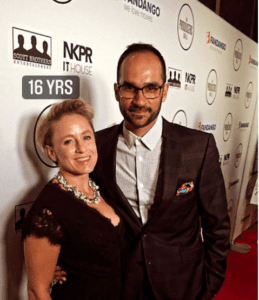
I think more so, what I would like to drill down on with that is the idea of there’s no misnomer around what the idea of a pivot is and that you should always be testing. I tell people often that 75 per cent of your paid advertising budget, especially in digital, should be for that. But you should save 25 per cent of it for experimenting. And the idea of pivoting should be a little bit more practical in the idea that you should be AB testing things and you should try a different ad formulas and you should try selling on different types of ad platforms as well. That’s the sort of innovation that we need now. We can’t be afraid that if we spend $250 in an advertising campaign on Facebook and it didn’t work, that it’s never going to work again. That pivot that we’re talking about has to be a little bit more practical in the tools that we’re using to stop and say, okay, this doesn’t work here or this works in 5, 10 minute segments and not one 50 minute. Whatever the case is.
The other thing I always try to reiterate with people is don’t be afraid to repurpose your content. Just because your content was one thing in one place. In fact, I’ll be honest with you, Raj, one of the things I’m trying to do right now is I have things that I’d like to do, like a host, etc. But I’ve been a little reluctant just because I’ve been very fortunate some of the stuff that I’ve been doing recently. But now I’m starting to realize that when I do what I’m going to do, my content is never going to be one place for one thing. I’m going to figure out a way those that it’s going to be multiple things so it can be a conversation about digital transformation one second and it can be about the movies that the person has been in the next. I think that’s where we have to start to think a little bit more about a wider range. And you’re a perfect person for that. I mean, you you’ve shown that content is king, especially in establishing connection. And I think that it’s important when you go into your archive, you’re going to start to be able to be like, you know what, I’ve got more stories here. I’ve got more interesting perspectives that I can bring to the table. What else can we do? And that’s what I’m excited about, because I think that there’s a gap there as well. And some of the stuff that people like yourself were able to do for years. And, what is the relevance now? Is there and how does it work? Don’t be afraid to revisit some of that content, especially considering how much hard work you put into it.
You know, I love that.
Not just you, but people.
You talk about anyone out there. Everything is about context. Right? I mean, you may have, for example, interviewed someone on a certain context, but there was a nugget of wisdom that you can pull out of there that is relevant to a context that you’re trying to talk about to your audience today. That’s basically what you’re talking about.
Yeah. Let me give you one great example. Just from you alone. You have probably interviewed in the past decade most South Asian female celebrities in the world. Okay, imagine the changing conversation that that represents in the next five years when female leadership empowerment is a mandate across the board. Now, you don’t need to exploit that. But if you went and created an editorial or a series out of pulling that together, now you’ve got other ways that you’re using your content that are way more clear to your brand. Not way more clear, but cohesive to your brand because you’ve done it right. That’s your leadership. This is what I’ve learned from other female leaders and this is what you’re going to learn along the way. I didn’t go and speak to them right now because they’re of the moment I spoke to them when they were at their prime and trying to figure it out when they made their first film. And I remember when Frieda Pinto said to me, blah, blah, blah, and we had this conversation about the importance of X, Y and Z and look at her. Now, that’s the type of stuff I’m looking forward to because I think that there’s really some value in bringing some of that to surface. But now we’re talking about content strategy. So we’re probably going a little bit too deep into a one on one conversation.
Well, let’s bring it back around for everyone as we get ready to close off. Let me ask you a couple of closing questions and hopefully that will bring us back around to closing this off succinctly. So one question that I really want to ask you and get your perspective on is that we live in a very aware world today. We’ve just finished talking about a lot of that due to easy access to content. Duly, as individuals, we have become far more aware today of our personal core values and those of others than ever before. But we used to be fed what our values need to be, and we had to somehow figure out how to fit into that box, whether we did or not. That was kind of the days of our parents’ generation. Now, it’s almost like things have flipped around where the awareness and the accessibility to content being so easy helps us to be able to find other people like us.
Therefore, almost authenticating or legitimizing that we’re allowed to be the individual that we are with the core values that we have, as well as recognizing that other people also have a very diverse range of values that maybe aren’t something that we resonate with. With all that said and done, this has elevated the importance of the role of branding to become one of the most important aspects of driving a company’s success to the bottom line, because if they don’t get that piece right, people are not going to be loyal to their brand. And without loyalty and converting people with your brand messaging it’s very difficult to sustain the growth of your company. I want your comment on that.
Well, I mean, from a purely academic standpoint, I think that you start to see the success stories of brands not falter through the years. They’ve got the decade run. They’ve got decades of runs that a conversation between you and I dissecting how it’s ended up working would never be able to give it the respect it deserves. But from a personal standpoint, I think what you’re really hitting on here right now is that there are too many places to falter. And there are too many places for your brand to get it wrong. So rather than sort of look at it as this, put this backpack on and make sure branding never get screwed up at my company, I think what we have to look at it as where are the pitfalls for us not being able to get it right. And from that, we’re working into a place where positive is only being built towards. Unfortunately, we’re still slightly in a situation where we’re trying to clean up a little bit of a mess. There’s still corporations that are going back and deleting old posts as a result of, say, this was a funny joke in 2013 and it’s not funny anymore. I just don’t think we’re at a pace yet where we’re able to sort of take a statement or a question like what you just said and stop and say, look at us like this ended up happening and look at why.
Instead, I think we’ve got to all go into our sheds right now as brands and people and stop and say, what are we really not? What have we not fixed yet? What is not clean? What is not clear? And remember, one thing we have to remind ourselves is that none of these platforms, these media companies or anything, none of them owe us anything. There’s no freestanding thing where some community, government based organization where we pay our… No, we don’t pay. So we have to remember that whatever it is that we’re trying to do from brand or content perspective, that every platform that we’re working on can be gone tomorrow for whatever reason. And so we have to come back to what our personal asset kit is, what we keep in our own folder. The one that says Raj on the desktop. That’s really the only thing that you end up keeping with you. So don’t get lost in any sort of platform thing that makes you stop and say, well, if it doesn’t work this way, it’s never going to work at all. Instead, go back to how that content brand and messaging becomes more important and aligned with yourself.
“Don’t get lost in any sort of platform thing that makes you stop and say, ‘well, if it doesn’t work this way, it’s never going to work at all.’ Instead, go back to how that content brand and messaging becomes more important and aligned with yourself.” ~Mohit Rajhans
Wow. You know, I think that’s a great place to finish off because I feel that you’ve really rounded things off beautifully for people. Mohit, any final words that you want to share with people? If there’s anyone out there that still quite doesn’t understand the importance of content strategy, the difference between the editorial component versus the advertising component in terms of driving brand loyalty, what would you say to them?
I mean, start from the beginning of this episode and listen to me. You know what Raj, we’ve done on so many interesting topics here that there are so many things to dissect within it. And I think that the beauty about even starting a conversation with somebody like yourself is that you haven’t even been given the mic properly to do a full audit of how your wealth of experience really is. You’ve given me this this stage and we’re having a great conversation, but you’re a living example of where some great achievements can come from, even making mistakes. So let’s continue to not make this, it has to be a formal thing each time. I think that if you continue to further the conversation, I’ll be there to further with you.
Allright, here, here sweetheart. I look forward to the next time that you and I have a conversation together. But one of the people with somewhere to go to be able to get a little bit more information about you. Can you tell people about this fabulous book that you have out on the market that I think is a good place for them to go to kind of further understand your perspective as a thought leader around the content piece.
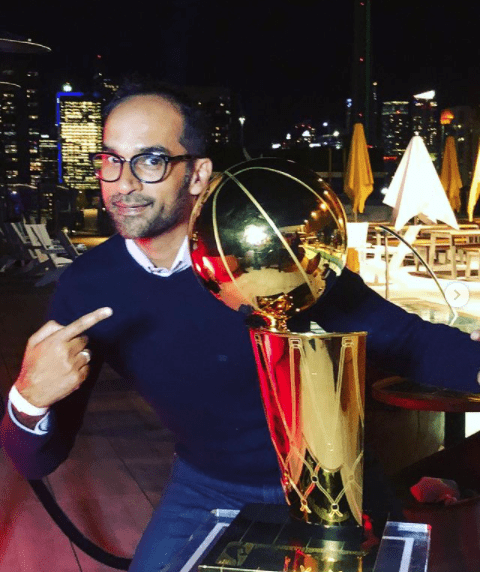
Sure, you’re better off getting it as an ebook. I will warn people. And the reason I say that to people is because it’s heavily linked inside of the ebook. So in referring it, I caution people that you wouldn’t buy a fitness book these days, a hard copy of a fitness book, because you have to keep putting it down to do your pushups. And so in the same way, it’s called Rethinking Your Content is the name of the book. It’s available everywhere. I’ve been super fortunate to have some luck with it. And I’m I basically am preaching very simple thing. It’s that we have to start thinking about the time that we invest in our content. We have to start considering that as our assets. And where does it live best that how does it live best in a world that you’re trying to create? And I’ve been lucky because it’s hitting some right nerves. But more so I’m at thinkstart.ca. If you’re ever looking to have a conversation about, I guess, the pivot or what the future digital footprint can be for you or how you’re going to tackle a new platform, let’s chat. I’d be happy to. It’s an exciting time right now, especially if you’re looking into getting your platform into newer platforms in the next 18 months. I’d be happy to guide you through some stuff that’s happening.
That’s wonderful. So if a person is to hit you up to consult with you, is there a specific email or somewhere they can go for that?
I think thinkstart.ca is the best. LinkedIn or thinkstart.ca. If you can remember how to spell my name, which most people can’t, then you can check me out on LinkedIn. But if not, the website’s great. Google me and you’ll find me. I’m the most findable person. I had a famousish person say to me, “Wow you’re the most findable person I’ve had to find in a really long time.” I was like, “Yeah, I guess that’s so.” But it’s because I want to be found by good people doing good things.
Oh, I love that. I love, love, love everything about what you just said. Thank you so much, sweetheart, for coming on and kind of opening people’s minds to the possibility that we’re only really limited by us not going out there and having the conversations and getting the information. It is out there. It’s a case of kind of, you know, finding it and sitting with it and deciphering it and consistently continuing with the conversation around it. Because only if you participate in it are you in it really.
Right. And don’t be afraid to make mistakes because that growth is only going to come from it in that process.
“Don’t be afraid to make mistakes because that growth is only going to come from it in that process.” ~Mohit Rajhans
And I am a testament to that. I’ve made many, many mistakes. And along the way I feel that I have more advice than many people out there and the things that I’ve done. Because I’ve done a lot of things that didn’t really have a road map, didn’t have kind of a template to follow. I kind of had to figure it out along the way. So it’s similar to your journey as well in media. We didn’t really have a road map per say for people like you and I that weren’t really the people that would normally do some of the things that we’ve done. So I feel that, from my perspective, that I like to learn more from people who have made a million mistakes than people who haven’t made any. And the reason is and I’m talking about myself in that perspective, the reason is, is that I know how to problem solve and find a solution around what you’re dealing with. People that haven’t failed don’t know how to do that. And I feel that’s the most valuable thing that you can ever learn from a coach, a consultant or a mentor.
Hmm. Yeah, it’s true. And I hope that people continue to understand the value of that, because that’s going to be the key to success there. But I want to say good bye to you as well. And I appreciate it. Thank you so much for having me on. And please make sure that your audience understands that that value is reciprocated and understanding that your support for me and, whatever it is that I bring to you, you will always be an ear. And I think that that’s a very important leadership skill to learn for your audience is that Raj’s ability to listen has really been a key factor in her success. And so that curiosity, that listening etc., will help most of you transform your confidence as well. So I look forward to hearing more about successful people who have been able to go through these programs.
Thank you so much, Mohit. I really appreciate everything that you’ve brought to the table. And I can’t wait till the next time that you and I have another conversation.
Great. Take care of yourself. Stay safe, everybody.
You too. Bye bye now.
Thank you so much for staying till the end, guys. I really hope you enjoyed this show and will action the many insights that were share. At the crux of this very complex discussion about content strategy and how to dial it in, is the notion of understanding your brand intimately, if this is something that you’re not fully sure you have dialed in, then I invite you to register for my free branding masterclass that I’m launching on Monday, April the 26th for two weeks. You can hop over to my website TheOpenChestConfidenceAcademy.com and click on the top banner that gives you access to register for free. I’m confident that attending this will change the way you look at branding because I’ve seen how it has changed the trajectory of brands that have incorporated my insights in the past through working with me one on one. I welcome you to register to learn what successful brands are doing to get it right. And if there’s anyone in your personal network that you feel should also attend, let them know now, because we have a cap on how many people we can host to the platform that we are using to bring the master class to you.
My hope with this episode is that it will open your mind to think about your relationship with content and whether you feel that what was shared in this episode could help you to step it up to ensure that what you intend to accomplish with your company, to connect deeper with your ideal client is in fact what your content strategy is positioned to do. If you found this episode to be valuable, I ask that you subscribe to this podcast. On the Apple, Android and Spotify platforms search ‘The Transform Your Confidence Show’ and on Youtube at The Open Chest Confidence Academy. And if you’re an avid reader, we’re also transcribing every podcast into a blog which can be accessed at TheOpenChestConfidenceAcademy.com/media/our-media and please share with your networks so others can garner the insights that I bring into each carefully curated show each week. And I invite you to join me in my private Facebook group, Transform Your Confidence, where I share knowledge and resources about mindset, media, communications, branding, marketing, leadership and advocacy for busy executives and entrepreneurs like you who are seeking to elevate the quality of their life. I pop into the group regularly to answer questions that the members may have on any of these topics. So hop on over. It’s free and insightful and full of great networking opportunities with people from around the world who, like you, are seeking to grow and level up and accomplish the next big thing in their lives. And as always, thanks for tuning in, guys, until next episode. Take care of yourself.

